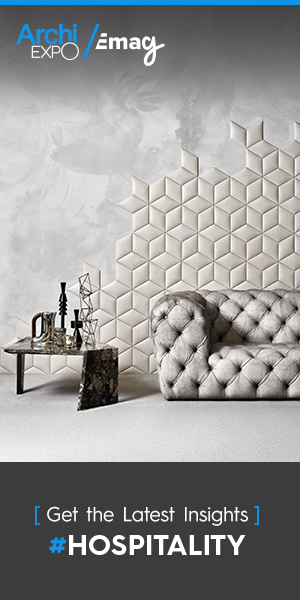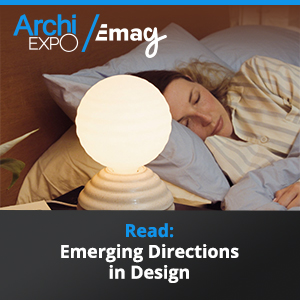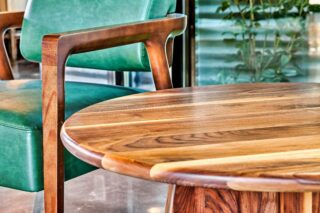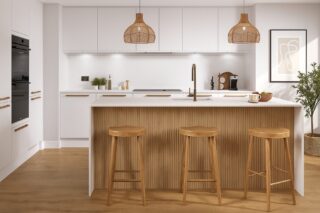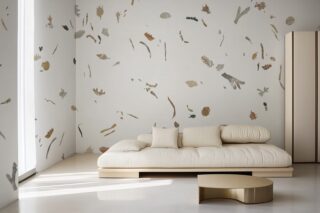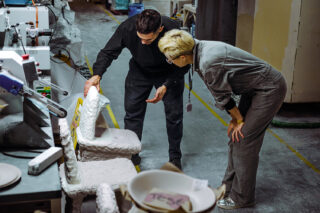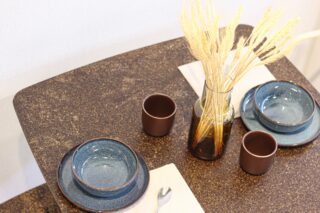As the goal to reduce energy consumption grows for countries around the world, the French launched the Energy Transition for Green Growth in 2014.
The plan calls for the post-oil era and a stronger, more sustainable energy model where prices, depletion of resources and environmental protection requirements are challenged. This touches the public and private sectors with projects from clean transportation to positive energy buildings.
This law passed in France tackles waste from product design to recycling and providing solutions to lowering energy consumption. This is one of the themes covered this year at Batimat, a construction fair in Paris, with a special focus on lighting.
The Post-oil Era for Lighting
“There is no zero-energy-waste lighting product,” designers Katharina and Thomas from mischertraxler told ArchiExpo e-Magazine. “Despite the production of LED, we will always require energy.” The green glossary has thickened throughout time with greenhouse gas, fossil fuels, the passive house and more.
Once we realized such possibilities to generate energy existed, we then thought of stocking it. However, “stocking energy presents a problem because it creates pollution,” Davide Oppizzi, designer and founder of Swiss company DCube, explained to ArchiExpo e-Magazine. “We need to find a way to stock energy that eliminates this issue.”
Click here to watch the DCube video teaser!
The question of stocking energy came up during the Batimat conference on energy efficiency and performance given by Chantal Degand, chief of the strategy marketing department at French electric company EDF. Products such as photovoltaic solar panels generate electricity, but no solution, as Degand explained, currently exists to stock that energy long term.
However, presented at Batimat, Imerys proposes photovoltaic roof tiles that store and redistribute energy, and Solarwatt MyReserve is also said to store solar energy with 93% efficiency. The MyReserve battery, tagged “Made in Germany,” is an energy stocking system adapted to all uses that won the EES Award 2015 and is on its way to the French market.
Lighting the Way, Today and Beyond
Artificial light took off with “the GLS 100-watt bulb emitting 95% heat and 5% light,” Jan Flook, director at Jan Flook Lighting, told ArchiExpo e-Magazine. “It was later replaced with the halogen 50-watt bulb with 75% heat and 25% light, which is better. The first LED took over in 2008 at 7 watts, 35% heat and 65% light.”
The latter has carried its population further by growing into chip-on-a-board (COB) LED technology in 2012, an updated version of the original LED said to be, according to Oppizzi and others, a major evolution. As LED continues to grow, designers remain faithful to the technology as the most energy-efficient.
“We always try to be energy savers by using the latest LED technology,” the product design department at PSLAB told ArchiExpo e-Magazine. While LED has existed for some time, the COB technology and the hot-cold light effect trend have only been around for a few years. “Without LED,” Oppizzi continued, “we’d really be in the [hole].”
Click here to watch PSLAB’s “the making of” their 800kg chandelier video.
The problem of reducing energy consumption remains, as Oppizzi explained, because ’going LED’ often relieves the stress of consuming, so more lights are purchased and spread around the house and left on more frequently without worry.
“Some garden lamps are tagged LED and renewable energy at low cost. You purchase one and set it proudly outside, near the walkway, but it only lights the path for the snail passing by. There’s wasted money and energy consumption.”
An Uprise for Natural Lighting
Many key players have come to understand that natural lighting offers the best results, requiring zero energy. Certain products seen at Batimat provide natural lighting solutions for architectural plans of new buildings or renovations.
“If we have a good link between natural and artificial light, we can cut back energy consumption by 30 to 50%,” said Bernard Lepage, Hexadome and GIF Lumière representative, during the press conference on natural light. “In new buildings, with proper thermal insulation, light presents one of the most important energy processes.”
Continuing his presentation on natural light, Lepage put an accent on overhead lighting, lumière zénithale. Hexadome proposes their Hexasteel Therm RPT Fix product, whose steel curb consists of a fixed and openable frame in PVC at the thermal break, a double air-sealing barrier and has a 30mm (about an inch) insulation thickness.
Combining artificial and natural light, as Lepage said, seems to be the answer. U.K. designer and manufacturer of high-quality performance eco-lighting, PhotonStar, presented their award-winning LuxLoop Sunpipe that provides both natural daylight and biologically optimized LED light. The product has been shortlisted for the Energy Efficient Lighting Product of the Year category of the 2015 Energy Awards for excellence in carbon reduction, energy efficiency, supply, brokering, products and services.
“The LuxLoop Sunpipe is the ultimate energy-saving lighting solution. When combined with PhotonStar’s wireless lighting control system, Halcyon, it will automatically save energy through the use of occupancy and daylight sensors,” said Mark Lovell, marketing executive at PhotonStar, in an interview with ArchiExpo e-Magazine.
Together with Monodraught, a U.K. sun pipe manufacturer, PhotonStar’s expertise in LED and the latest technology brought innovative results.
“We’ve taken their sun pipe and incorporated it into our luxury product, then with the use of the sensors, it will use daylight as much as possible until it reaches a level where it becomes insufficient,” said Lovell. “The LED system takes over at this point.”




